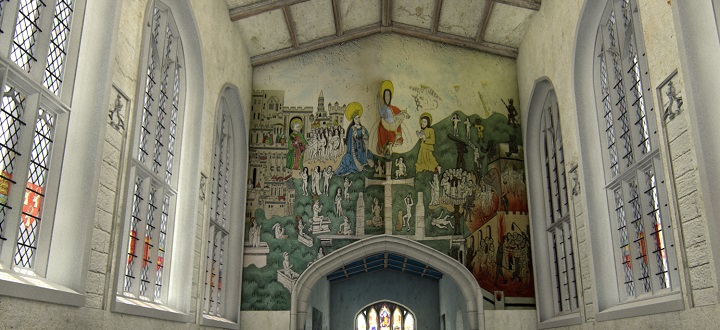Archaeologist Dr Kate Giles could have been forgiven for feeling a sense of disappointment at losing a bid to secure research council funding for a study into the nation’s guildhalls. After all, these 15th century institutions are a particular passion of hers, sparked by her work on the some of the finest surviving examples in the city of York.
But shortly after being turned down, Dr Giles received a call from the Chair of the funding panel asking if Kate could help write a conservation management plan for the King Edward VI Grammar school in Stratford-upon-Avon, a guildhall where William Shakespeare had once been a pupil. “For the last ten years we have been working with the school on a project that has grown in scope and interest with every turn,” she said.
https://www.youtube.com/watch?v=7YLffkLRwdQ
Find out more about Dr Giles' research into Shakespeare's school in this presentation from YorkTalks 2016
What she and her colleagues at FAS Heritage discovered led the school to win a £1.4 million grant from the Heritage Lottery Fund. This will enable the public to see for the first time in centuries the ancient schoolroom where the world’s most celebrated poet and playwright studied.
There were times – early on, in fact – when the school might have wished they had never invited Dr Giles to travel south. “For many years the school had identified the Headmaster’s office as the remains of one of the earliest-documented schoolhouses in the country, dating to 1427. But when we dated it, we found that the building was actually from around 1502. Thankfully, by some clever detective work and tree ring dating, we were able to identify a one-up and one-down almshouse as the original schoolhouse. This was an even older building, dating back to 1425!”
During the decade-long project, Dr Giles and her colleagues from our Centre for the Study of Christianity and Culture have been able to shed remarkable light on the buildings, paintings and environment in the turbulent years of the Reformation that were the backdrop to Shakespeare’s early education. “We have used all our knowledge and skills to bring this environment to life,” she said.
Digital models
Using a range of digitally creative solutions, including 3D modeling and projection, the York team has been able to recreate the religious iconography in the adjacent Guildhall Chapel, much of which has been hidden or lost down the ages. They have also revealed new images in the priests’ chapel in the Guildhall.
“Bringing the past to life and allowing buildings to tell their own story, is what we are all about,” says Dr Giles. “The use of digital modeling enables us to reach out to a global audience. But what is most satisfying is that the school has decided the story is so compelling that they don’t want to keep the building to themselves any more. They want to open it to the public.
“It is a great privilege to have spent the last ten years undertaking the academic research that underpinned the school’s Heritage Lottery Funding and which is now telling a new chapter in Shakespeare’s story."
The text of this article is licensed under a Creative Commons Licence. You're free to republish it, as long as you link back to this page and credit us.





